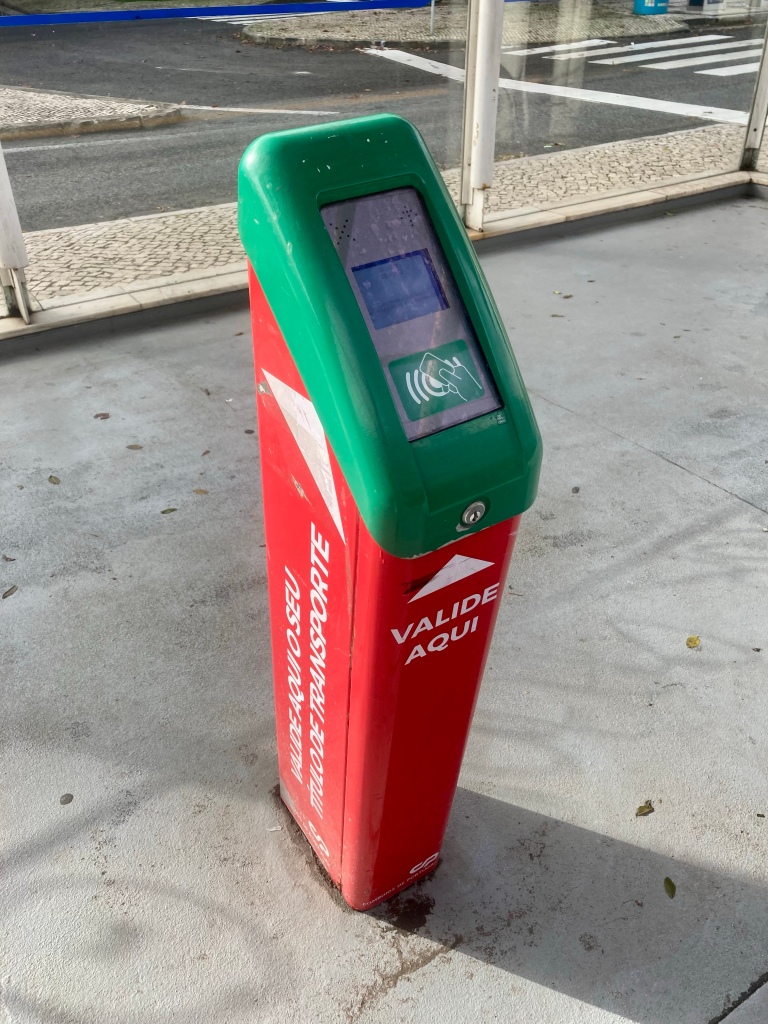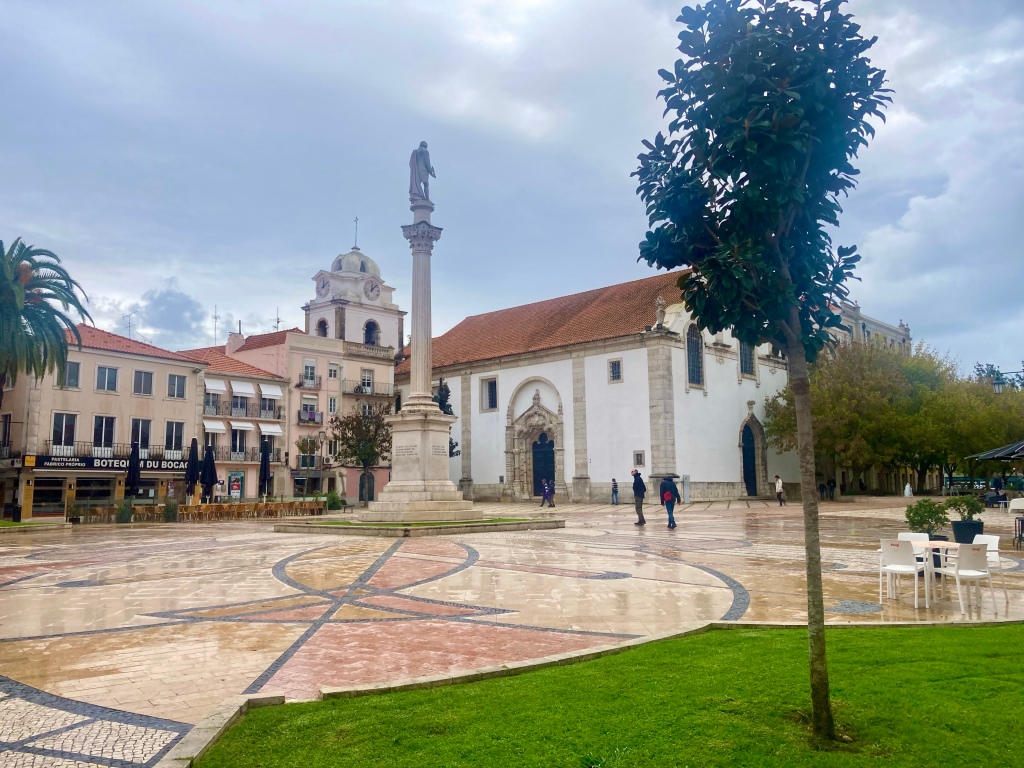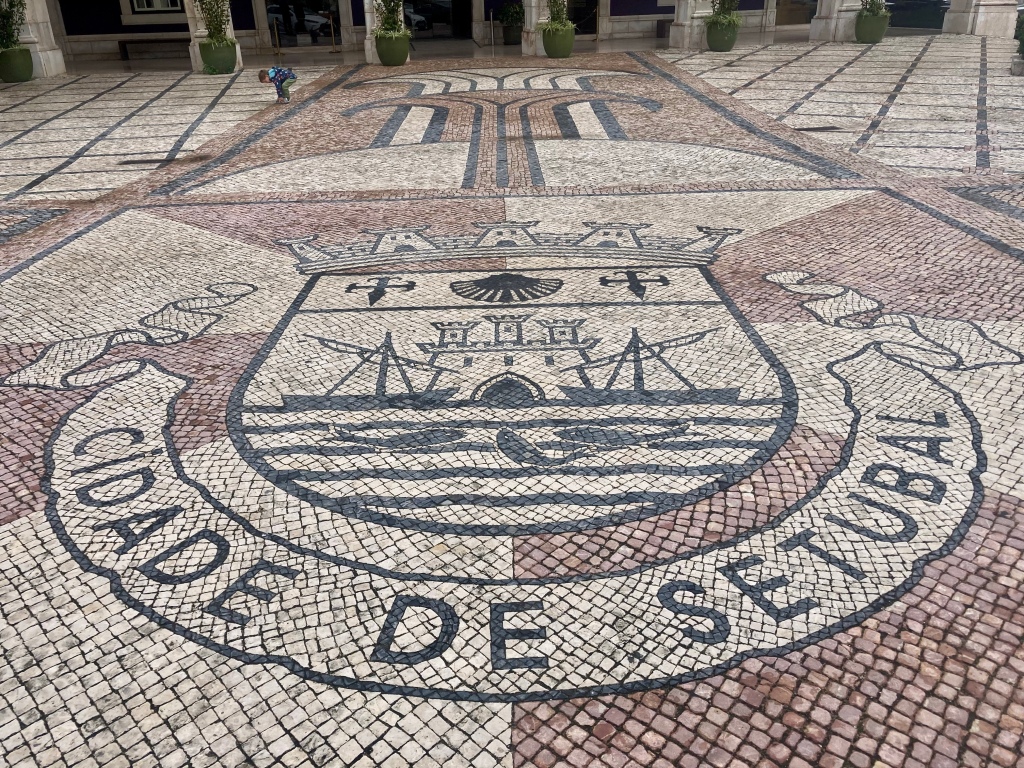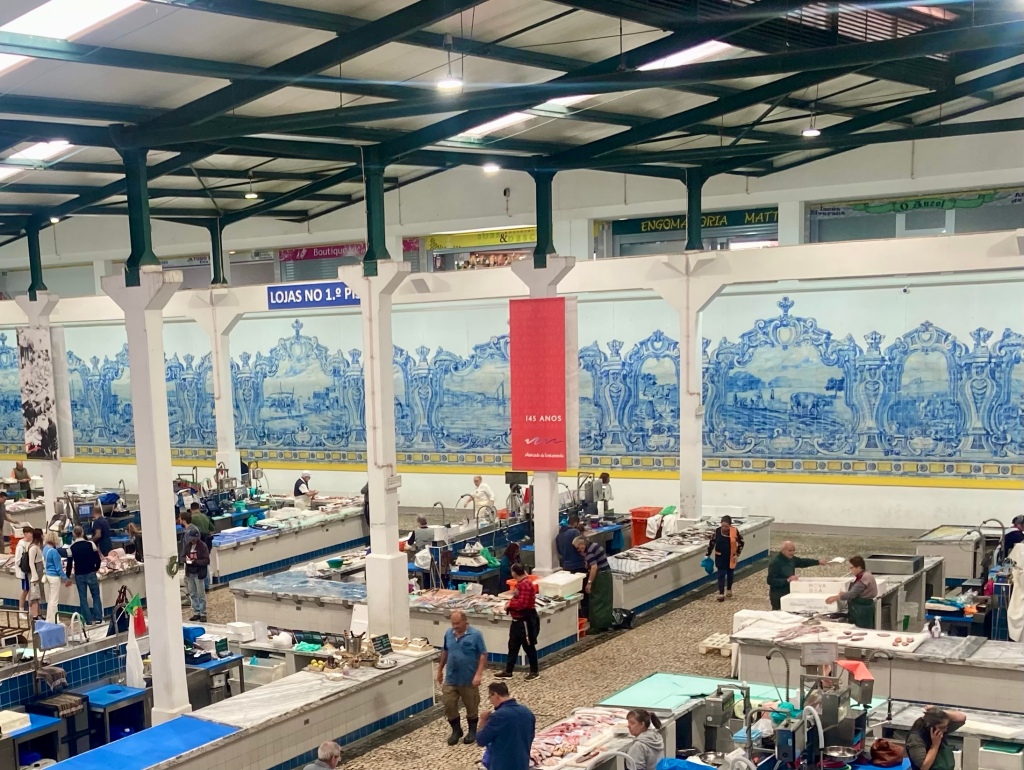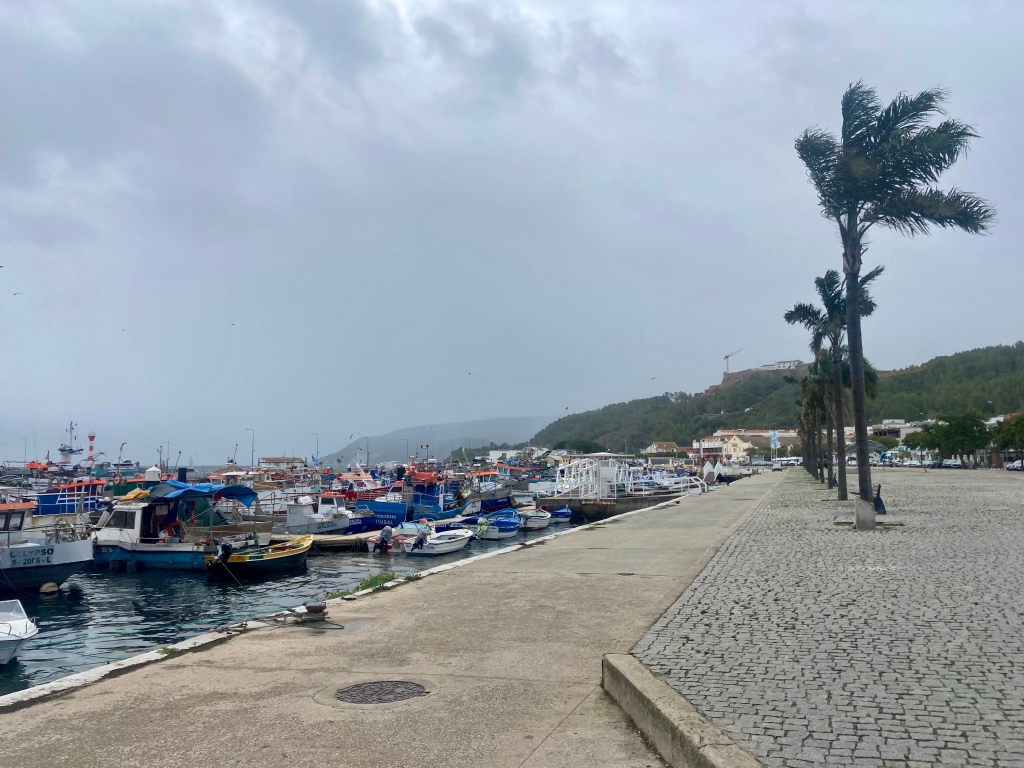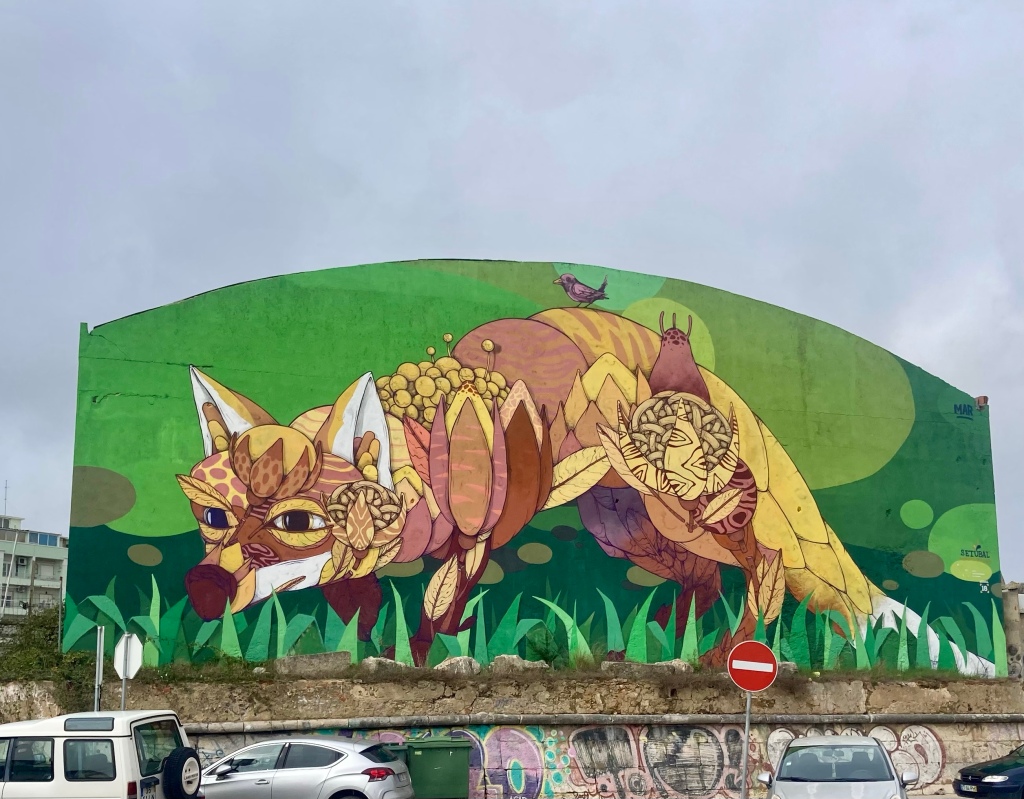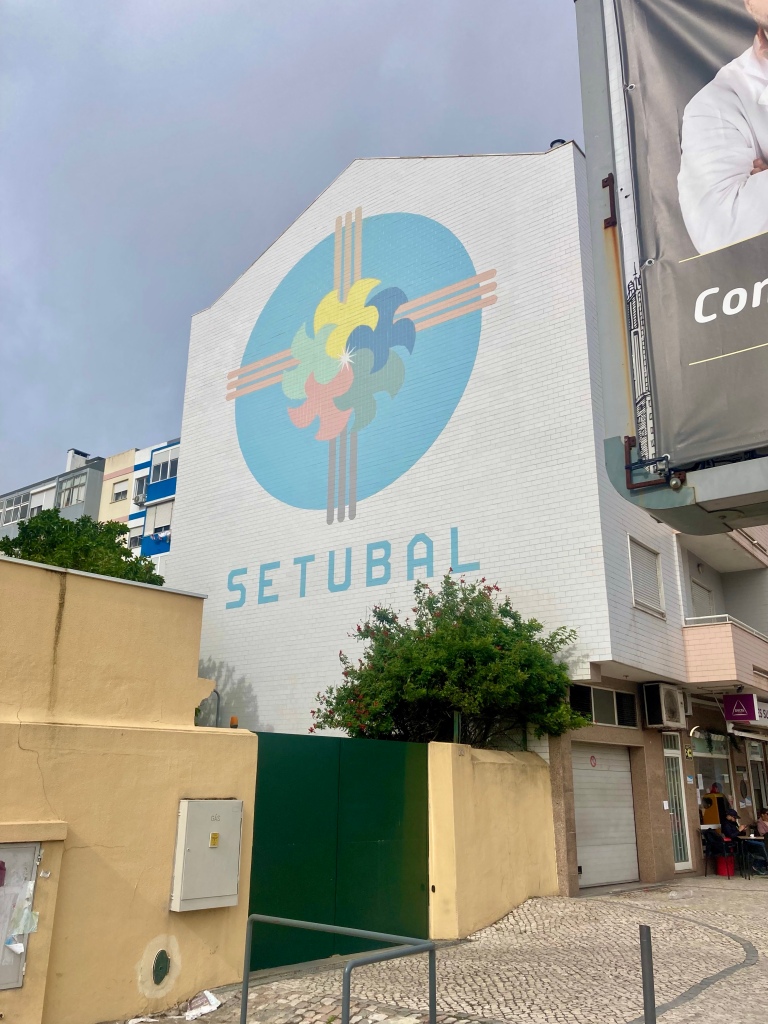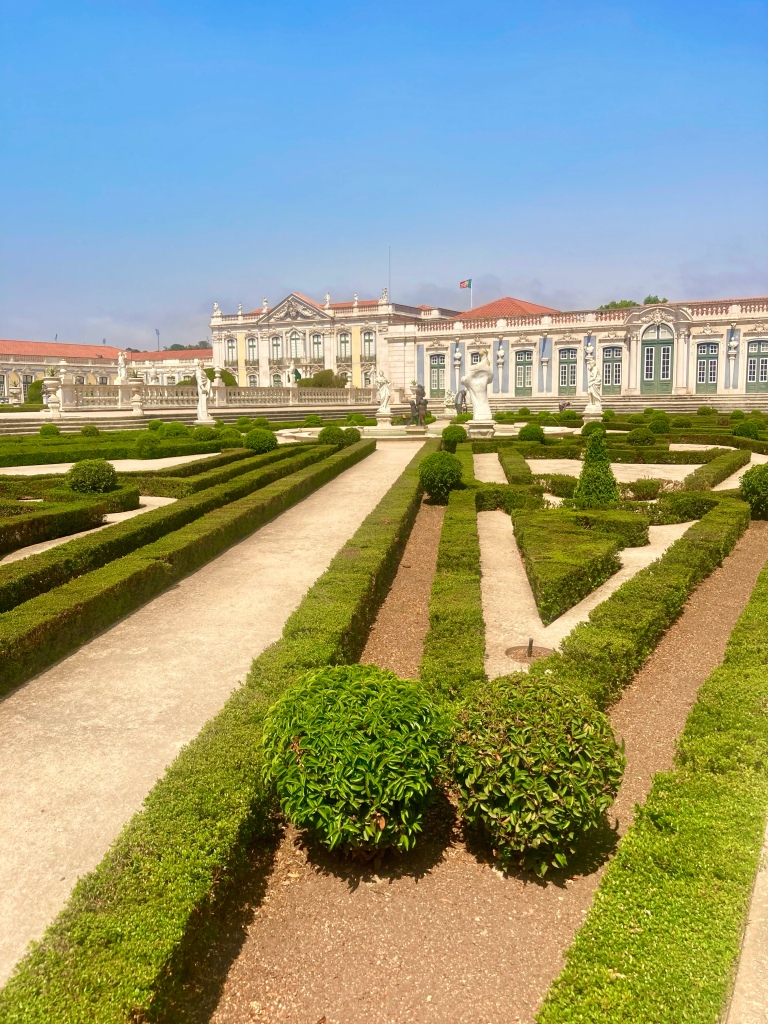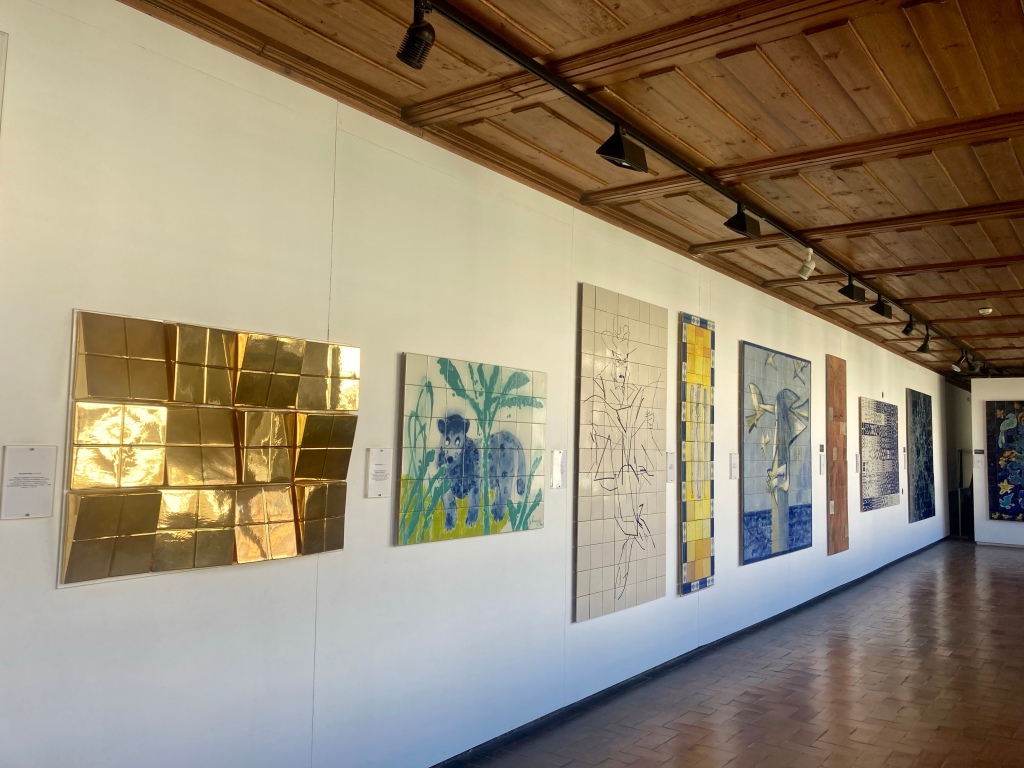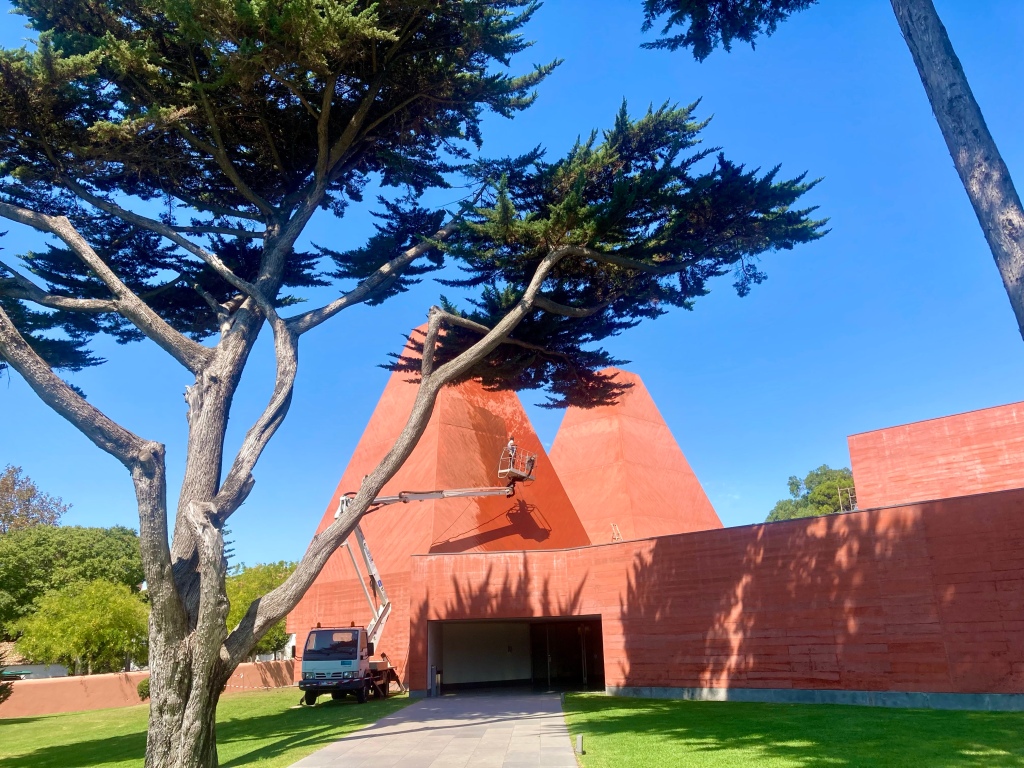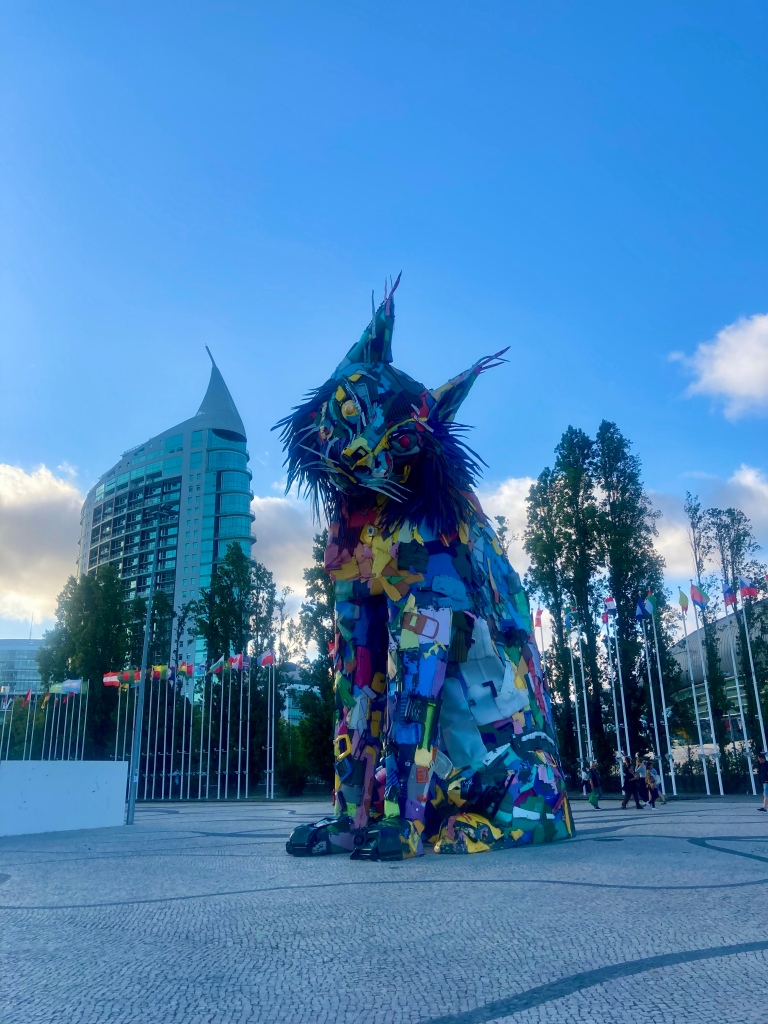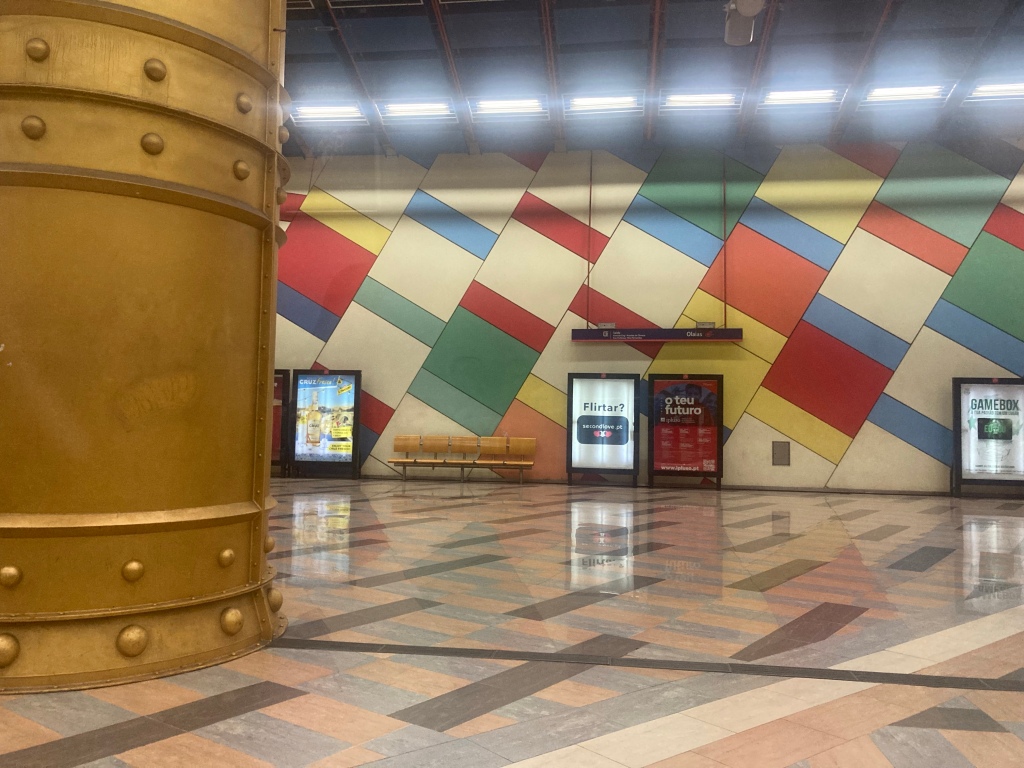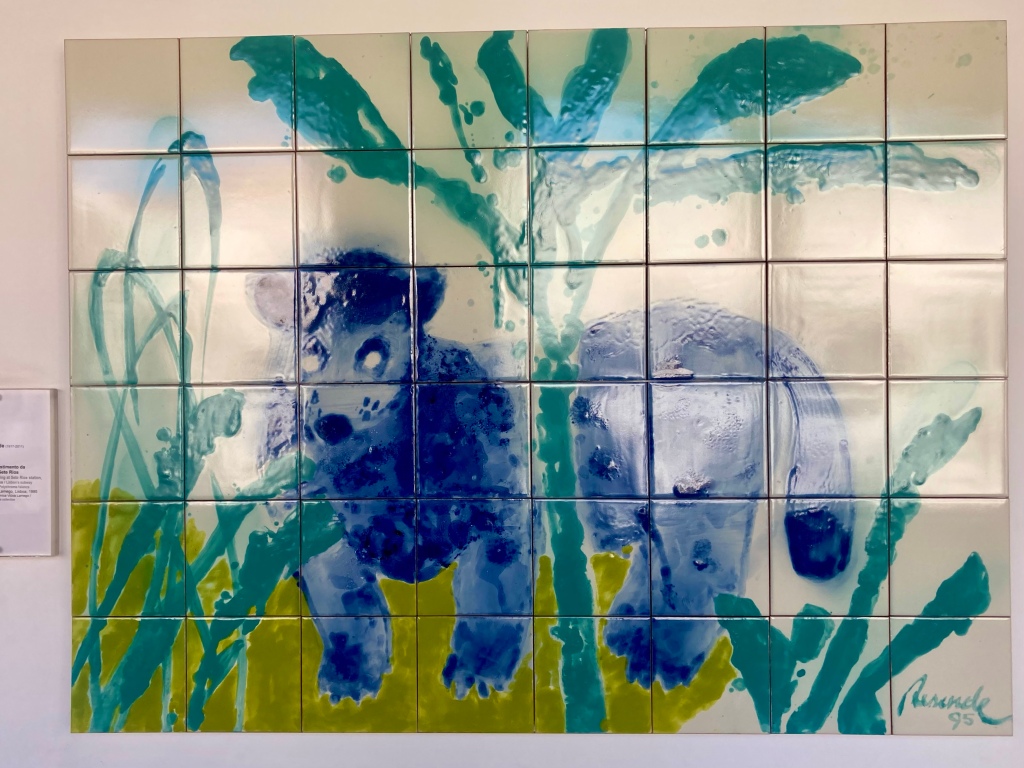
One of the things I like best about travelling is seeing new places, however I do have a few favourites that we return to time and time again. So in October we went on what has become an annual trip to Lisbon. In addition to being a great city, my husband was born there and so it has a personal element to it as we see his family.
We decided to stay in a different hotel this time, right next to the entrance to Alameda metro station. This is a good location as it’s on the line to the airport and Oriente (more about this later) as well as the line to the centre of the city, and is a pleasant area full of restaurants and cafés, but away from the tourist trail.


Always on the lookout for small, interesting museums, on the first day we went up to the area around the cathedral and visited the Museu do Aljube Resistência e Liberdade. Although the area surrounding the museum was busy with tourists, most don’t seem to make it into here, but it’s actually far more relevant to modern Portuguese history than many of the popular museums. It focuses on the dictatorship in Portugal, many visitors would be unaware of this aspect of the country’s history, and there are lots of quite harrowing accounts of what happened to those who dared to air a different view to what was expected.
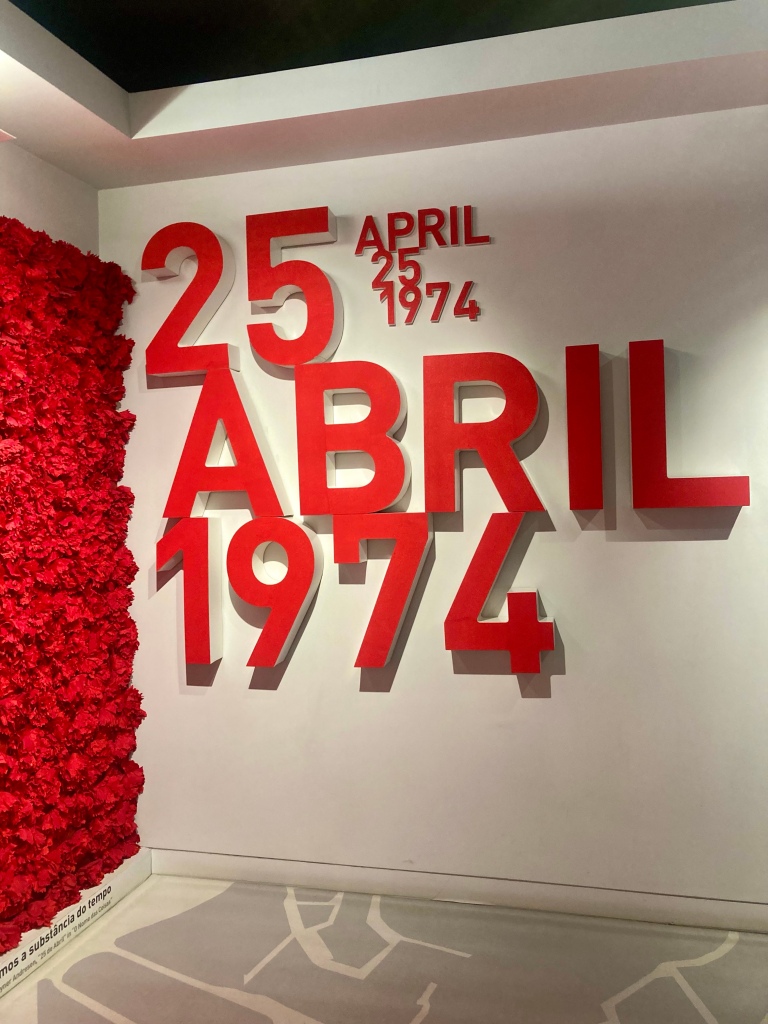
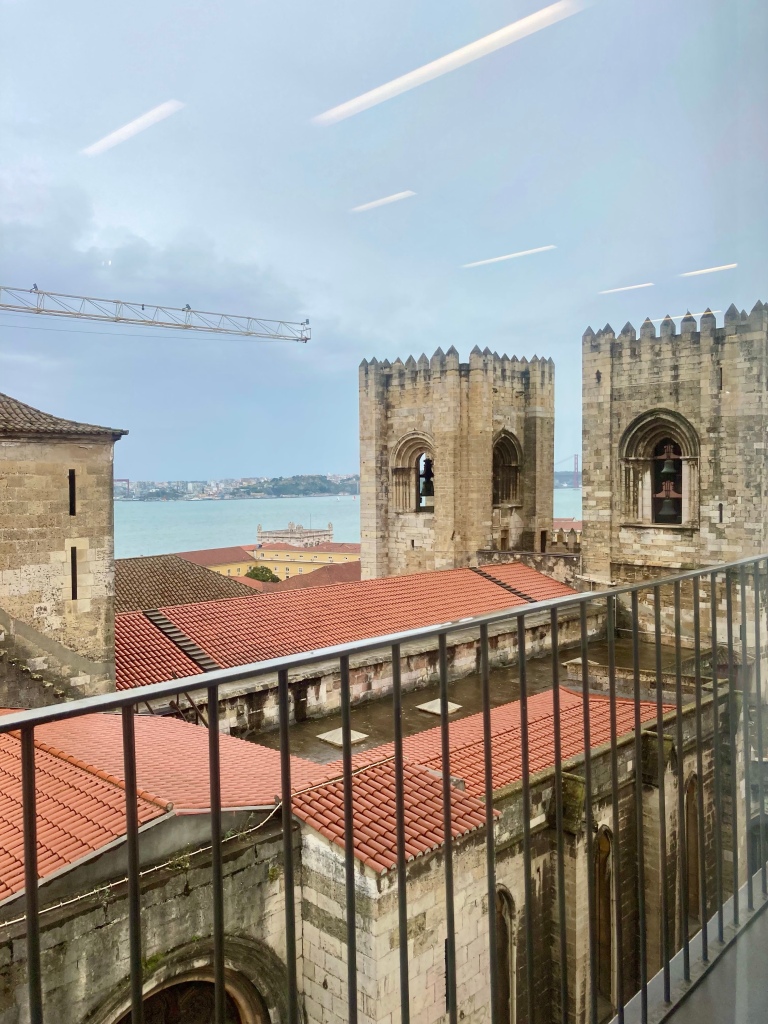
There were also some nice views over the nearby cathedral and across to the riverside from the upper floors. Afterwards we had a walk along to a nearby viewpoint, but the whole area was so full of visitors that we didn’t spend too long there.

Another thing I love about Lisbon is how the big shopping centres are open late. Now I know that for some people going to shopping centres might not sound like the best of travel experiences, but they are handy places to spend a bit of time in, often with lots of food options, and are particularly useful if the weather is too hot, too cold, or as on this occasion rather rainy.



The shopping centre we normally go to is the Vasco da Gama, next to Oriente railway and metro stations. It is next to the Parque das Nações, which is the part of the city where Expo 98 was held. The area has lots of interesting modern architecture (including Oriente station itself, designed by Santiago Calatrava), restaurants and riverside walks. I’m used to Sunday evenings being a time when things are closed and the streets are quiet, but in this shopping centre everything is open until midnight and it was full of people shopping and enjoying the many eateries.
The following morning we returned to the riverside but slightly further north, getting the metro to Moscavide station and walking along to the Vasco da Gama Bridge. This is the longest bridge in Europe, at 12 kilometres, and was built to reduce congestion on the more famous Ponte 25 de Abril in the centre of the city. At the beginning of our walk we saw the Vasco da Gama Tower, which is the tallest structure in Portugal. Originally built for Expo 98, it is now a 5 star hotel with a rooftop bar and observation deck.


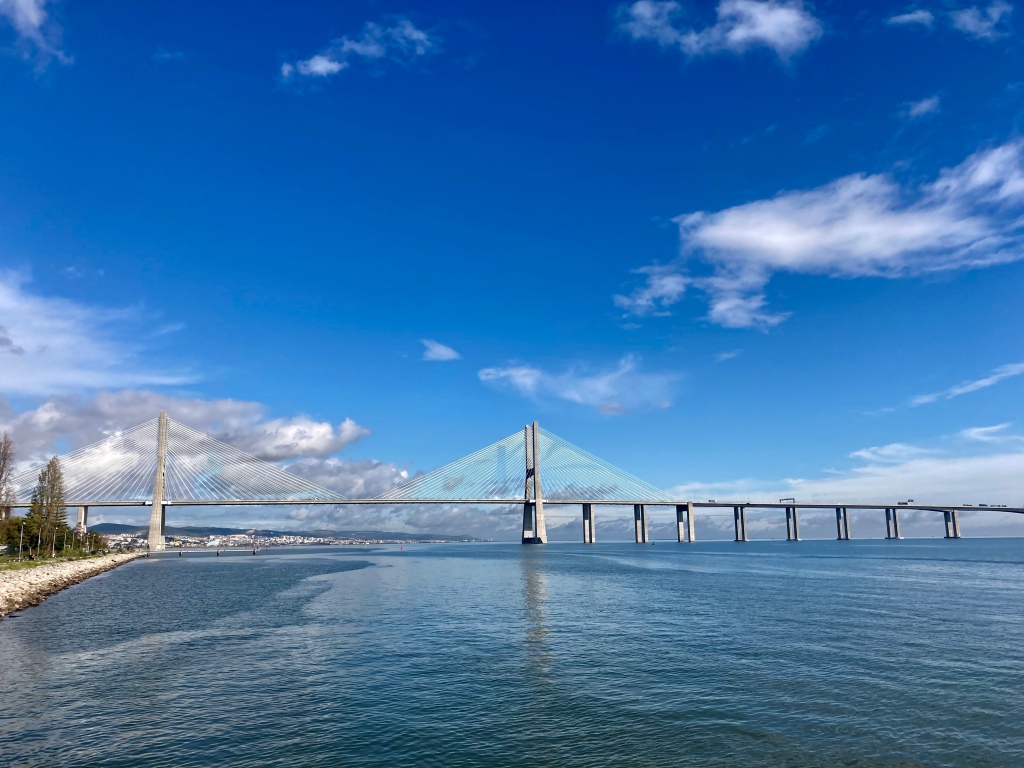

It was the first time we’d walked along as far as the bridge, and it was so impressive that we’ll definitely be returning.
After getting the metro back to Saldanha, near where we were staying, we went to the Banksy Museum. This features very comprehensive recreations of his most famous works, and includes a lot of explanations. Although I previously knew some of his better known works, I had no idea how varied they were and the detailed thought process behind them.

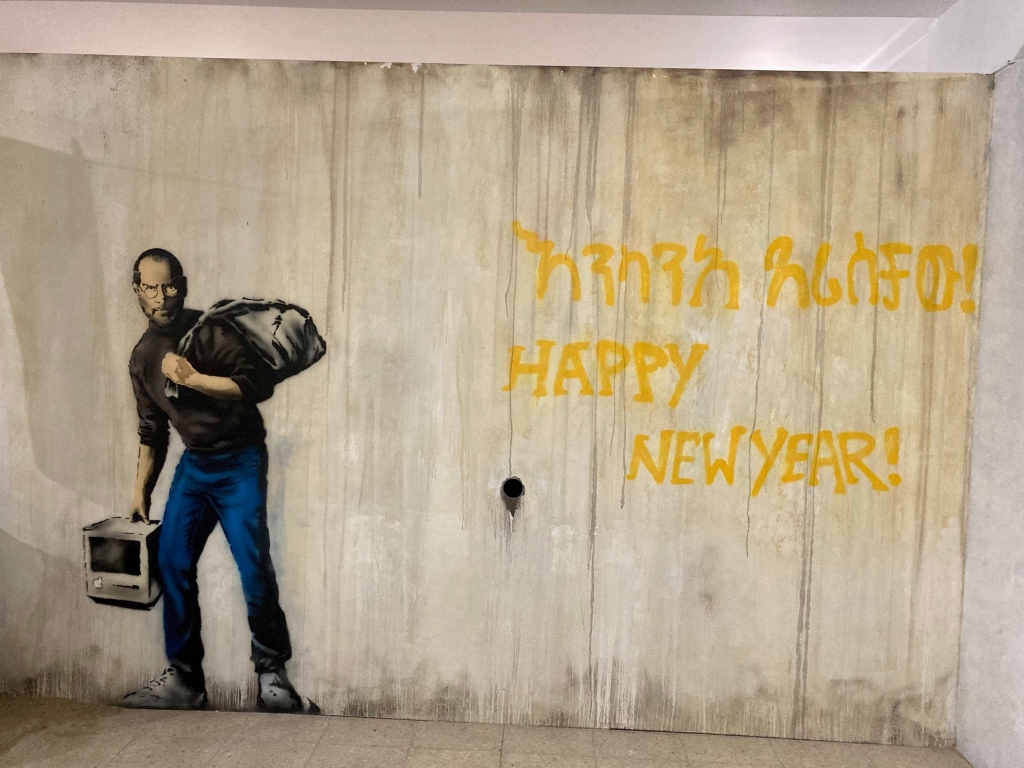

Lisbon is a beautiful city for wandering around and has lots of colourful buildings, including many intricate doorways and other features.




We decided to go on a day trip to somewhere we hadn’t been before, and took the train down to Setúbal, a small city to the south of Lisbon. I’ve written a separate post about this for those who would like to read about it in more detail, but to summarise it’s an interesting place that is known for its fishing industry, market, dolphins, and proximity to beautiful coastal areas. It was rather windy and showery when we were there, and I think it’s better visited in the summer months.



What about the food in Lisbon? For two of our meals we met up with family who took us to local eateries, one was an Italian restaurant and the other a traditional Portuguese. The focus in the traditional restaurants tends to be on steak, other meat or fish, served with large platters of chips and rice, and salad. The meal ended with one of my favourite desserts, a molotov, a type of soft caramel meringue. We also tried a sweet fortified wine called Moscatel de Setúbal, which by coincidence was the evening before our visit to Setúbal and we saw plenty on sale there. These meals may sound rather meat heavy but there are more vegetarian options than there used to be, and the city as a whole has far more vegetarian and vegan restaurants than in the past.
We also went to Café Império, a favourite of ours which is set in an old cinema, and which I’ve mentioned in a previous post about Lisbon. The interior is quite grand with smartly dressed serving staff, and it serves the ubiquitous steak, accompanied by an egg and its own recipe special sauce, along with a variety of other meats, pastas and a recently expanded vegetarian menu. As with most places in this area (Alameda, where our hotel was located), it attracts locals rather than just being aimed at tourists, which tends to give a more authentic dining experience. I’ve got nothing against restaurants in tourist areas as they provide a convenient way of trying the local cuisine, but I think if possible it’s better to eat at places that people who live there would also go to. Once again we were amazed at the low prices in Lisbon, many of the main courses were half what you’d pay now in the UK, and that’s not even including the cheap daily lunch specials offered by many restaurants.



On our final full day in Lisbon we got the train down to the Museu do Oriente, which features a large collection of Oriental artefacts and art, including an exhibition on Japanese traditions. It’s next to the docks and the Ponte 25 de Abril, we were able to get the train from Roma-Areeiro station, near our hotel, to Alcantara-Terra, it’s also accessible by bus, tram and a different train service to Alcantara-Mar.

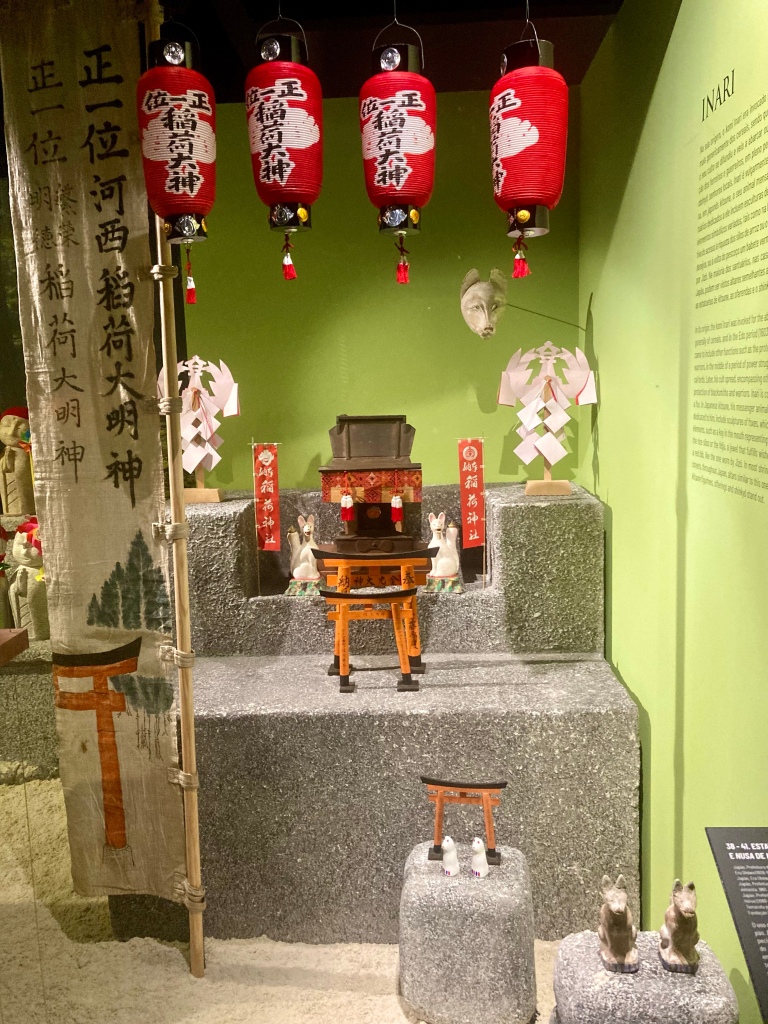
A quick word on transport tickets in Lisbon, I’ve also written about this in my previous posts on Setúbal and Lisbon transport. We always buy a Viva Viagem reloadable ticket, available at ticket machines including the airport metro station. We buy one for each person and put money onto it (easy to do at the machine), I try to do a rough estimate in advance of how many trips we’ll be doing but if in doubt you can add a small amount and then top up as required. Then each time you use the ticket on the metro, bus, Lisbon area trains, ferries and most trams, the fare is deducted using the “zapping” system. There are also 24 hour tickets available which can work out cheaper if you’re taking several trips in a day, but for us the zapping is sufficient.
After the museum we went to the nearby LX Factory, which is a redeveloped industrial area of restaurants, cafés, bars and shops. In need of some refreshment we stopped off at the Landeau Chocolate café, which serves a particularly delicious chocolate cake – in fact it’s so well known for this that I think that’s the only food it serves, along with a good selection of hot and cold drinks.



Near Alcantara-Terra station we found another viewpoint looking over the Ponte 25 de Abril, up near a park called the Tapada das Necessidades which was inhabited by a collection of peacocks, ducks and other birds.



On our final evening we went to the Parque das Nações again, this time to walk to the area with many restaurants and bars. We also saw the giant Bordalo lynx sculpture which has only been there for a few years but has become one of my favourite things to visit there. It’s a bit difficult to see in the dark but I think that actually gives it extra character and an air of mystery.




We had a few hours on the last day before heading for the airport, so had a look around the nearby Arroios market, which featured a range of fresh produce and some restaurants which would open later in the day. There was also yet another viewpoint that we hadn’t visited so we walked up there for a final look over the city.

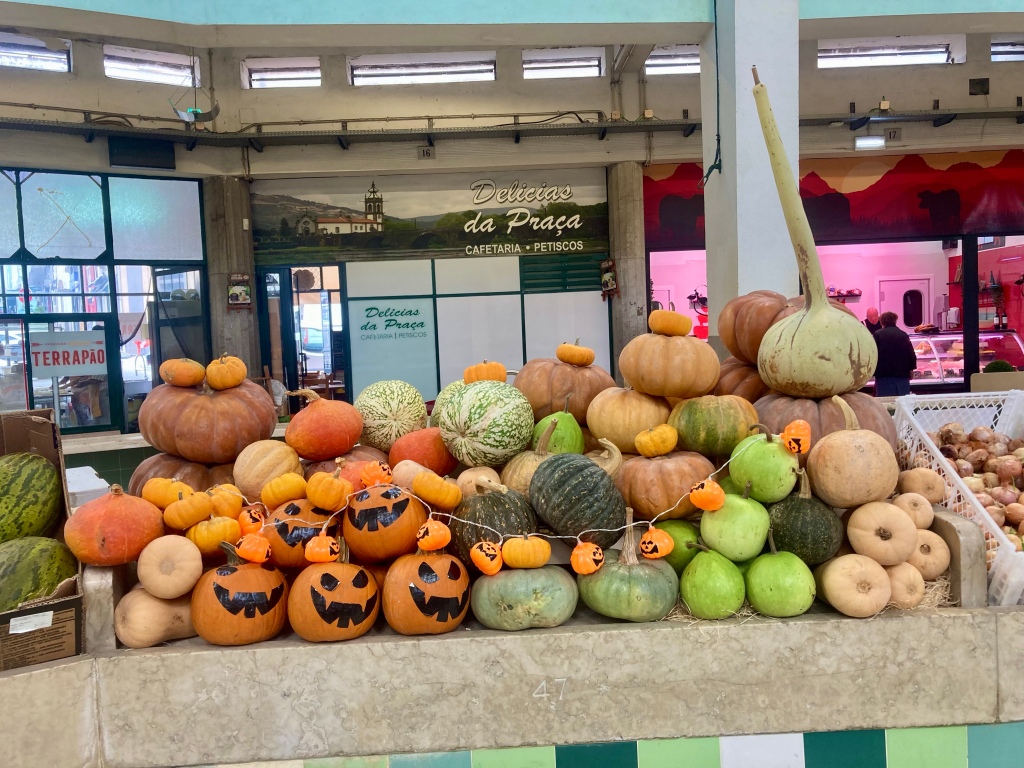

What we really enjoyed on this trip was going to lots of new places, and in fact I have a list of many other things to do on future trips, such is the range of museums and places of interest on offer in Lisbon and the surrounding area. We will definitely be staying in the same hotel again, the rooftop bar had fantastic views and was made even better by the offer of a free drink each.


On the way back to the airport we ended up going to the wrong terminal. At Lisbon airport the low cost carriers such as easyJet and Ryanair use Terminal 2, a shed-like building with a limited range of places to eat, and which had so little seating in the past that we ended up sitting on the floor by the bins next to McDonald’s. And so we were on autopilot when we got out of the metro station and got straight on the bus to Terminal 2. It was only when we’d got there and couldn’t see our flight on the departure board that we realised easyJet now fly from Terminal 1. Luckily there’s a frequent shuttle bus between the two and we were very early anyway, so our mishap didn’t matter. On further investigation I found out that the Portuguese airline TAP had slots taken away from them last year which were instead awarded to easyJet, hence the upgrade in their status at the airport. Which we were very grateful for as Terminal 1 is much better, with a large food court and ample seating area in the middle. What’s less good about the airport was the 55 minute queue for immigration on arrival, which unfortunately is quite common now – I will come prepared with reading material at the ready next time we go.






